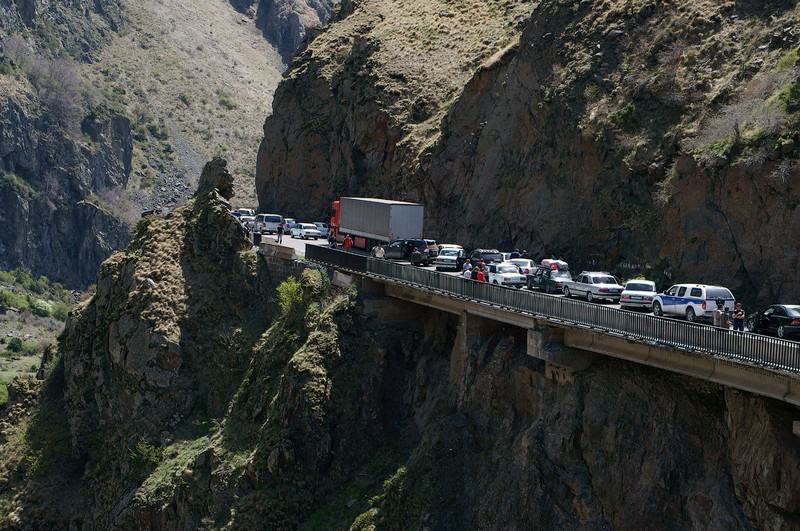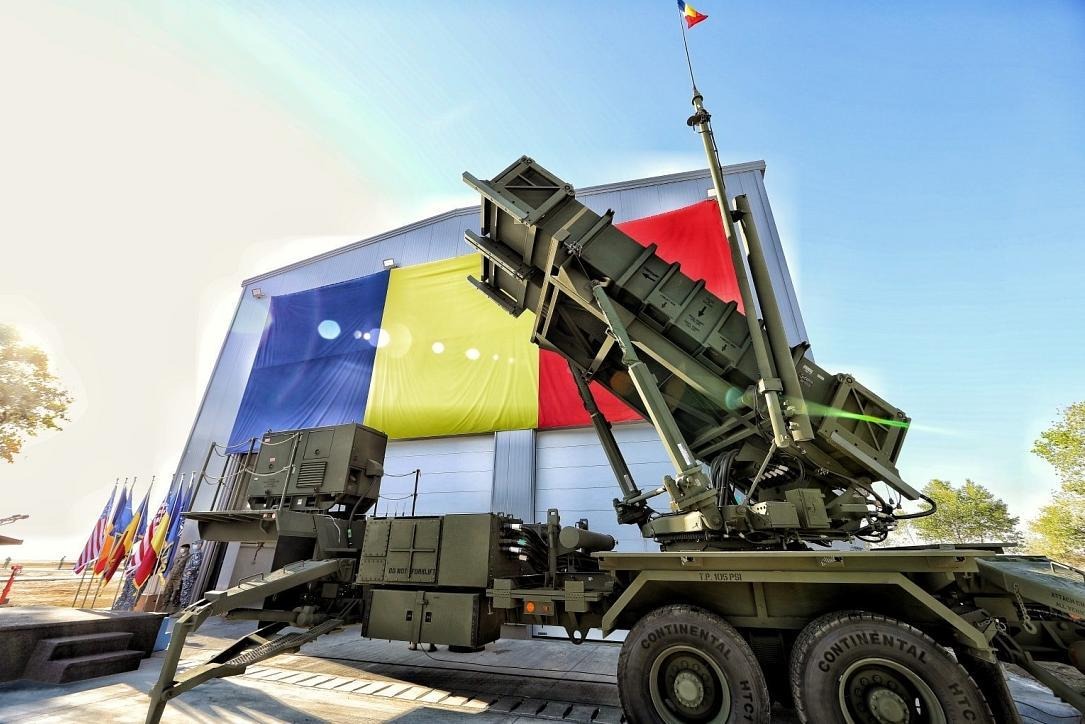
South Caucasus States Keen to Cash in on China’s, India’s Transportation Expansion
South Caucasus States Keen to Cash in on China’s, India’s Transportation Expansion
With the emergence of China and other manufacturing powerhouses in Asia that constantly seek access to new markets, the Caucasus has become attractive as a transit route for the movement of goods between the two parts of the Eurasian continent. Georgia (and by extension Armenia) have a historic chance to capitalize on this economic reality.
In early September, the government of the Republic of Georgia embarked on a major infrastructure project to upgrade the motorway that connects the country with the Russian Federation. “The project envisages the construction of a two-lane asphalt-concrete road, five bridges, five tunnels and the rehabilitation of one bridge,” the minister of regional development and infrastructure, Irakli Karseladze, said in a Facebook post (Facebook.com, September 10). The centerpiece of the project, a nine-kilometer-long tunnel that will cut through the Jvari mountain pass, is set to become the longest in the country, according to the minister. Once completed, the new 23-km-long road, which bypasses the rockfall- and avalanche-prone Georgian Military Highway, will provide safer, round-the-year connectivity to Russia’s Republic of North Ossetia–Alania, reducing the travel time considerably. The construction of the road section is being financed primarily by the Asian Development Bank and the European Bank for Reconstruction and Development. The project, whose total cost is a little under $400 million, is expected to be completed by 2024, and is being implemented by China Railway Tunnel Group. It is also “an infrastructure project under the Belt and Road Initiative [BRI—also known as the One Belt, One Road], according to the firm responsible for the project” (Global Times, September 12).
The Georgian government says the new highway will be the first in a series of upgrades of the North-South Road Corridor (NSRC), a vital transit route for Georgia, Armenia and their regional trading partners. The road is of particular significance to Armenia as it is the only land route that links it with its strategic ally, Russia. Decades of conflict with Azerbaijan as well as closed borders with this oil-rich neighbor and its main regional backer, Turkey, has taken a toll on the Armenian economy. For years, landlocked and resource-poor Armenia has been trying to attract investment to develop favorable transit routes and to expand market access, and the NSRC has been central to this drive (Worldbank.org, June 8, 2017). In essence, the Armenian section of the NSRC, construction of which began in 2012, is a 556 km stretch of roadway from the Iranian border to the Armenian-Georgian border that will give Armenian and international freight carriers access to Georgian road network and seaports on the Black Sea.
Armenia (unlike Georgia) is a member state in the International North-South Transportation Corridor (INSTC) project that aims to connect India with Russia and Europe via Iran (India Times, April 3, 2017). Despite opposition from Washington, India and Russia have been pushing since the beginning of the century for the INSTC, in which Iran plays a key role. Azerbaijan too, also a member of the INSTC consortium, will be a major beneficiary of the new transport route. The country has invested heavily in its roads and infrastructure, which made it, according to the Indian ambassador to Baku, ideally prepared to activate the INSTC (Ficci.in, June 23). “The first shipment of goods from Finland bound for India on the INSTC route commenced its journey on June 21,” Ambassador Bawitlung Vanlalvawna said in an interview with Azerbaijani journalists. “This is also timely as stakeholders in all the countries along the route, including Russia, Azerbaijan and Iran, are making efforts to operationalize the INSTC to make it an attractive transport route for [the] transaction of goods between these countries” (Report.az, July 16). Conceived well before China’s BRI, the INSTC always aimed to cut costs and the time taken for transporting goods from the Indian subcontinent to Russia and Europe. The choice of Azerbaijan, with its developed infrastructure, as a transit hub was only natural.
But Armenia, too, received glad tidings from the INSTC’s chief sponsor. “We are planning to connect the western part of [the Iranian seaport of] Chabahar and the Indian Ocean with Eurasia and Helsinki in Finland, through the territory of Armenia, creating a North-South Corridor,” Iranian media quoted India’s ambassador to the country, Gaddam Dharmendra (Armenpress.am, March 10). Armenian experts point out, however, that Yerevan “lacks a clear strategy” in the matter, and its infrastructure requires substantial foreign investment (Armenian Weekly, March 24), which lenders frequently condition on “critical institutional and policy reforms that will accelerate progress toward achieving a more open and market-based economy in Armenia” (Adb.org, July 21).
That does not mean that the INSTC via Armenia and Georgia is totally without prospects. In fact, Georgia could potentially become a serious competitor to Azerbaijan, if it were to abandon or ignore some of its deeply ingrained fears and concerns. The main obstacle id, of course, the unresolved conflict with Russia which make it difficult to utilize the transit railway communication through Abkhazia (JAMnews, January 14, 2021 and February 27, 2017). But in addition, the Transcaucasian Highway (TH), which links breakaway South Ossetia with Russia’s North Caucasus, has been plagued by engineering and maintenance problems and is probably not suited to carry heavy freight traffic.
That said, Georgia may be willing to consider two other options. One is the Avaro–Kakhetia road, an 85-kilometer-long highway that could link Dagestan with Georgia’s eastern Kakheti region (see EDM, October 2, 2014). The other would connect the Chechen Republic’s Itum-Kali Rayon with Georgia’s Khevsureti region, in the northeast of the country (Interfax, April 13, 2018). Chechen leader Ramzan Kadyrov announced, in 2018, that he was in talks with the Russian government to set the Itum-Kali–Khevsureti project in motion. For years, Georgian politicians and experts have expressed misgivings about both these roads because “all roads connecting Georgia and Russia were always used by Moscow for military purposes” (JAMnews, January 4, 2020). Those fears may be outdated, however. True, the Russian army did use the TH during the 2008 war with Georgia; but these days, as one Georgian observer points out, when a “Russian military base is located 40 kilometers from Tbilisi [in South Ossetia], […] this panic is clearly unfounded—Russia does not need a new road for aggression against Georgia” (JAMnews, January 14, 2021).


